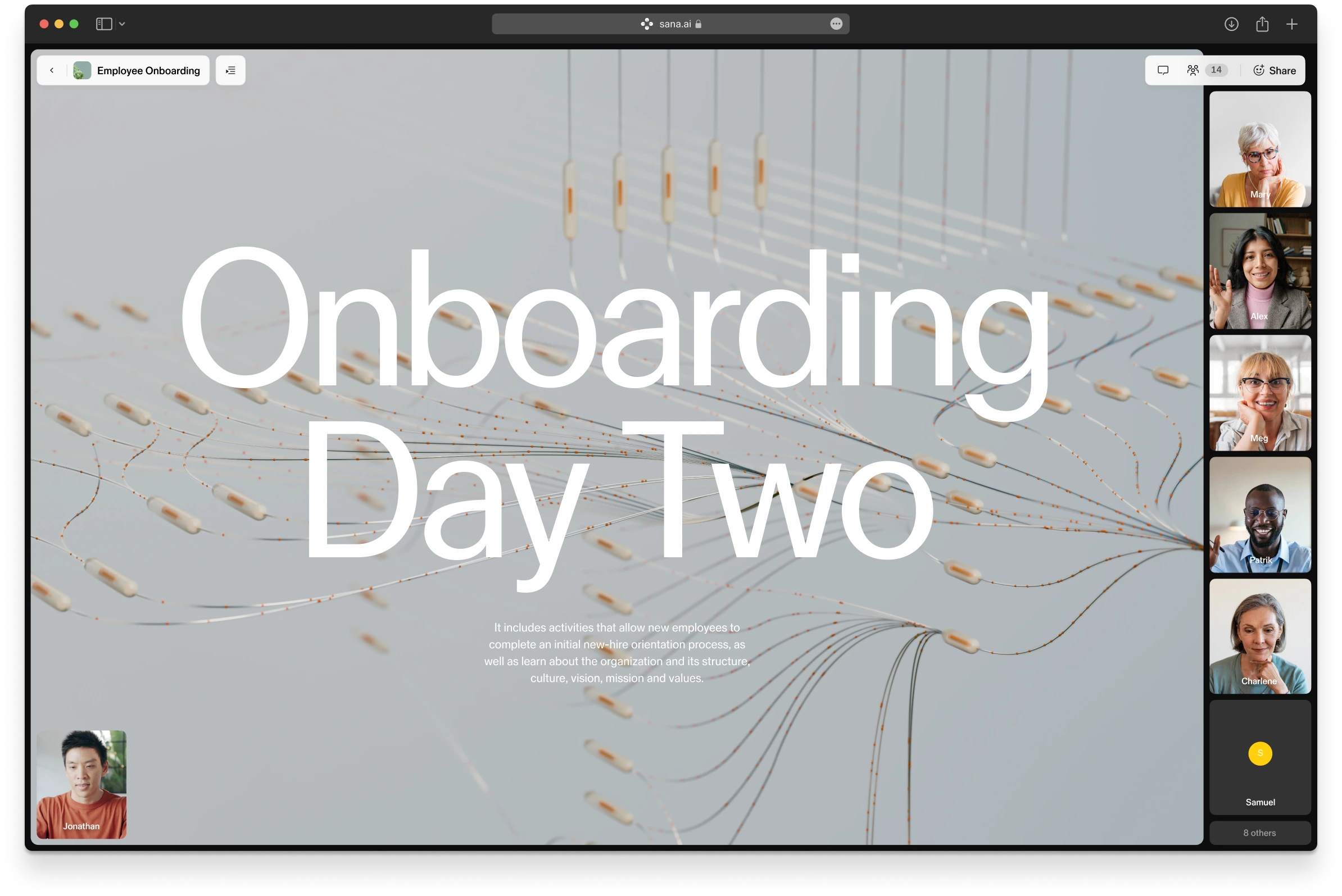Unlocking the power of people data

Enabling our employees to be empowered and productive is on top of the agenda for any People leader. But how do we achieve that at scale?
It all starts with people data. Together with Winningtemp, we hosted a live session to explore the topic with investor, advisor, and Google Specialist Leader Johan Eriksson.
Here’s the full recap.
People analytics is a secret HR superpower
People analytics is the practice of collecting and transforming HR data. Using it can help us understand trends in company culture, employee engagement rates, and how employees define a great place to work. And in the end, guide people and business decisions.
But starting a new people analytics function isn’t easy. In a busy HR team, finding the capacity to create something new is tough. And where do you start? For example, how do teams take eNPS scores, and use them to guide business strategy?
Uncover new HR insights
A sustainable business can’t rely on vacation-time to sustain the energy of its workforce. Companies need to know how best to look after its employees, all-year round. Constant customer satisfaction requires constant employee satisfaction and energetic teams. But what are the signals that can help companies to proactively support their employees? And how do we create products that customers love, while looking after our teams?
This is where people analytics can help. People analytics can help HR teams to explore potential correlations between seemingly unrelated areas. Take social relationships and productivity. Maybe employees with busier social calendars are more energized and productive? Energized employees are vital for hyper-growth companies. Knowing that social activities generate positive energy might lead you to organizing more team events. The insight drives the tactic.
Test hypotheses that drive HR outcomes
Using data to drive decisions in this way is powerful. But only if the data is accurate and we read it correctly. Without a solid grounding, we risk falling for the traps of easy wins and false positives. It’s about the quality of your data, and the intention of your questions.
Asking questions of data is easier when you have the right tools and features. Let’s imagine you’re trying to understand what drives employee satisfaction. With the right platform integrations, you could understand the relationship between employee satisfaction and vacation time. Perhaps the data shows that your most productive employees take all of their vacation allowance — and stay offline. That’s another interesting learning. But how can you use that insight to make changes that help your employees and your company? Now you have a hypothesis that nudging more employees to take vacation will drive employee satisfaction.
So how do you validate that hypothesis? Again, it’s all about the integrations. An integrated HRIS, messaging platform, and LMS could automate a micro-learning that’s triggered to a percentage point. Say it’s half way through the year, and someone’s only taken 10% of their allowance. The employee receives a ping in Slack or Google, nudging them to book more vacation. Say two weeks go by, and your employee forgets to book their vacation. Your integrated LMS delivers a micro-learning that explains the benefits of vacation time to the individual, and the company. The learning could direct your employee to your vacation-booking portal.
Start from where you’re at
Getting started with people analytics can feel overwhelming. We say — start small and catch some quick wins. Use existing datasets, ask clearly defined questions. Once you’ve mastered the techniques, you can think bigger. Here's how:
Set the baseline
All super-insights start with a simple baseline. So start with the data that you have. Pull as many reports from your HR stack as you can and see what’s available. eNPS, vacation time, learning courses completed, benefits usage, attendance — it’s all potentially useful.
With your data in hand, ask yourself:
- What can your people analytics tell you today?
- Based on these data, what changes can you make today?
- Look at these changes you could make - could a little more data create something more valuable?
- What else do you need to learn from your people?
- How will that help the business? Short-term to long-term - what changes do you see?
- Are there additions to your HR tech stack that could help you to scale your insights?
With these insights in hand, it’s time to understand where you want to go next.
List your top 10 questions
Now you know your strengths and gaps, create the top 10 questions that people data can answer. How do you find the questions? First off, trust yourself. You know where improvements will make the biggest difference. Ask:
- What problems am I seeing?
- How can HR help employees before problems start?
- How could analytics scale the ambition for my strategy?
Involve broader management — but only after reviewing your own wants and needs. When you’re ready to bring in wider stakeholders, ask them: how could people data strengthen and empower the management teams? What problems could people data help them to solve?
Test rather than guess
Now you’re ready to go from having a question, to wanting some answers. The best way to make progress is to start testing ideas.
Maybe you have a hypothesis that people who engage with learning more regularly are more likely to gain promotion. Here’s how you (in)validate it:
- First, write down your hypothesis. For example, ‘I think that people who actively engage with learning are more likely to achieve promotions more quickly than people who are moderately engaged with learning’.
- Next, pick a unit of time to measure. You could use 6 months, as it’s long enough for patterns to emerge.
- Export the relevant data from your LMS.
- You should be able to see people's engagement rates, and calculate the mean average of employee engagement with learning.
- Now, look for the outliers. Are there people who are significantly more engaged than their peers? How many people?
- Look at their HR data. Are these people achieving a faster rate of promotion? If not, can you make guesses about why?
If experimentation is outside your comfort zone, reframe the challenge as an opportunity. You’ll learn new skills and find solutions that can make it easier for HR to deliver support efficiently, and at scale.
Embrace best practice
Don’t fall for the quick wins
Working with data means learning to interrogate it. We’re all victims of bias, which means we sometimes see what we want to see. In the sciences, that’s known as ‘fishing for data’ – looking for the one finding that will prove your point.
“Always look for the outliers in your data. That’s what’s truly interesting. That’s where there’s room for conversation and learning.”
Johan Eriksson
Take an example from Google. Recently, they noticed that Google’s User Satisfaction was showing about a 10% point increase. That’s a big jump. And, even though it would have been nice to accept the win, the number was misleading. A closer look at the data showed a deviation of 13%, both higher and lower from the mean average. In addition to this there was a very likely sampling bias, making the year over year comparison irrelevant. So not only was the actual number incorrect, but also the implied increase.
If you’re going to work with people data, everyone needs to know their quantitative from their qualitative. Schedule data-literacy training, to help the relevant teams learn how to engage with your strategy. Educating employees helps teams to stay curious and creative when looking at data. And curiosity matters. That’s where the super-insights lie.
Build a data warehouse
Get data on your side. Make it usable. Integrating your data will increase your ability to search it, experiment with it, and find insightful connections. For example, integrating your HR tech stack with your LMS can allow you to see new patterns.
Sana’s integration with Winningtemp can make this work simple. Winningtemp’s dashboard can give users a top-level view on employee engagement. With these insights in hand, HR and L&D teams can create learnings that are part of a people-first HR strategy.
—
People analytics offers HR teams the opportunity to look at existing problems in new ways. To help everyone as we continue to adapt. By learning more about our employees, we can improve their wellbeing, now, and into the future.
Many thanks again to Johan Eriksson and Jacob Österberg for their time and insights.
The LMS integration - every scaling company's best kept secret
Read article
